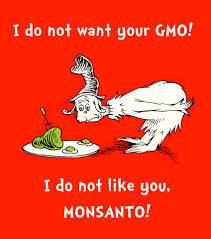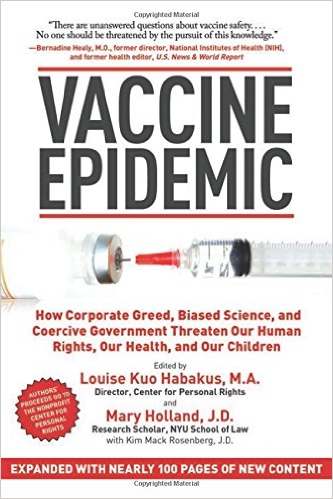 I have a new friend. His name is Howard Vlieger, and he is a third generation Iowa farmer. I started asking him questions about the food I buy in the grocery store to feed my family.
I have a new friend. His name is Howard Vlieger, and he is a third generation Iowa farmer. I started asking him questions about the food I buy in the grocery store to feed my family.
Yikes!
Much of the knowledge Howard possesses can only be fully grasped after decades upon decades of raising animals and crops. He regularly advises farmers across the US, helping them address and correct problems they are having on their farms. You see, many farmers are struggling with the shocking consequences of growing genetically engineered (GE) crops, giving genetically modified (GM) feed to their animals, and using the weed killer, Roundup (glyphosate). We don’t hear about these difficulties, but they are prevalent.
As a lifelong career farmer, Howard speaks from personal experience about what’s happening on today’s farms. He is also a researcher and expert on genetically modified organisms (GMOs), glyphosate, and their effects on crops and farm animals. He collaborates with experts from around the world and lectures in the U.S. and internationally about these topics.
When Howard told me that he was coming to California in January, I quickly arranged for him to speak in my area. He gave an excellent presentation followed by an informative Q&A session. I decided to document some of what he shared that night.
In Part 1, I focus on seeds and crops. In Part 2, coming tomorrow, I address the impacts on animals and humans.
Toxic manure permitted on organic crops
Manure from Confined Animal Feeding Operations (CAFOs) can be used on fields for organic crop production. This proposal did not go unchallenged. In the formal comments by Consumers Union on the USDA-proposed rule:
‘Any source’ of manure includes all non-organic farming operations including concentrated animal feeding operations (CAFOs) which raise hogs, chickens, and cattle in densely populated and confined conditions. The incidence of death, disease, antibiotic and heavy metal use is high on these farms. This raises serious questions regarding the safety of manure obtained from non-organic and confined sources. [emphasis mine]
When the USDA became involved in organic crop certification, it changed the rule that had previously disallowed such a practice, despite strong opposition. This is very convenient, not to mention profitable, for the Big Ag/Big Food companies that own both CAFOs and “organic” farms (i.e., use the toxic manure from the one for the other).
Take home message: know the source of your organic food. Here’s a book on the rise of the CAFO industry, in case you want to know more.
Billions in “tech fees” charged to farmers
Farmers must pay annual technology fees on every bag of GM seed they purchase. These royalties are paid to the companies that hold the GM seed patents, including Monsanto, Syngenta, DuPont, Bayer, and Dow, and are levied on top of the cost of the seed itself.
These extra costs have added up. In 1993, prior to the GMO era, the retail price of a 50 lb bag of cottonseed was $45-$60. By 2010, cottonseed was no longer sold by the pound, but by the number of seeds. A bag of 230,000 cotton seeds (38-46 lbs) costs about $697 per bag. A bit of middle school math allows us to make an apples to apples comparison:
- 1990: 50 lbs cottonseed = $45 to $60
- 2010: 50 lbs cottonseed = $758 to $917
Here is the breakdown of costs for that $697 bag of cottonseed in 2010:
- $159.99 for the cottonseed itself
- $412.20 for the technology fee
- $125.00 for the seed “treatment,” which includes an insecticide, fungicide, and nematicide. Cotton farmers use massive amounts of pesticides to get a viable stand of cotton plants in their fields. The overuse of chemicals has damaged the natural protective mechanisms in the soil and has resulted in the use of yet more pesticides.
To demonstrate just how much profit technology fees generate, Howard gave an example using the 2010 crop year. He stated that if we hypothetically presume that GMO technology was used for all planted acres of corn, cotton, canola, sugar beets, and soybeans, using USDA figures for planted acres, the technology fees for planted acres in the US that year would have generated $8.6 billion. If we add in the canola acres in Canada, the number would have risen to $9.9 billion!
This is not a stretch. The US leads the world in GM plantings. The US Department of Agriculture disclosed that 95% of sugar beets, 94% of soy, 90% of cotton, and 88% of corn grown in the US in 2012 were genetically modified.
Clearly, GMO seeds are a highly profitable business. You and I support GMO farmers twice, as taxpayers and consumers. Our government subsidizes GMO farmers who are obligated to pay Big Ag’s royalties. We then absorb the extra costs a second time in the form of higher food prices. We pay for these exorbitant technology fees whether we want to or not.
GMO crops require far more water
Crops sprayed with glyphosate herbicides, such as Roundup, are not drought-resistant and require substantially more water than those that are not sprayed.
One scientific study documented that a glyphosate-resistant variety of soybean, which was sprayed with the recommended amount of glyphosate herbicide, required more than twice the amount of water to raise the same amount of plant biomass than the original, non-glyphosate soybean variety.
Farmers may be largely unaware of this increased need for water as advertisements for GMO crops lead them to believe that GMO seeds are superior in every way. Therefore, farmers experiencing drought conditions would be wise to pay special attention to the water-use efficiency of glyphosate-tolerant crops.
Superweeds now huge problem
Superweeds are a long-predicted and devastating consequence of herbicide-heavy GE farming. Weeds that used to be 3 feet tall, bearing 100,000 seeds per plant, are now 10 to 12 feet tall and bear 400,000 to 500,000 seeds per plant.
There is no currently approved herbicide cocktail that can control such weeds, including the amaranth pigweed. Some cotton and peanut farmers in the southeastern part of the US are spending $150/acre to have these superweeds manually dug up and removed from their fields.
Given the associated costs of superweed removal, the next generation of herbicides and herbicide-resistant crops are on the way. This will surely set into motion another round of neglectfully undisclosed and unfortunate outcomes of GE-herbicide roulette.
Broken promises of greater GM crop yield
GE crops yield less per acre than conventionally grown crops.
In 2009, the Union of Concerned Scientists published the “Failure to Yield” report, documenting the lower yields of GE crops compared to original, non-GE crops. This finding was based on yield trials conducted by public universities from the years 1996 through 2008.
Those of you following the GMO debate know that greater food production was the reason we entered into GE farming in the first place. Faced with an ever increasing global population, massive Third World hunger, and children dying of starvation worldwide at an unacceptably high rate, Big Ag presented a compelling argument in favor of GE crops to feed the world.
Stay tuned for Part 2 tomorrow, which will cover some of the impacts that GMOs and glyphosate have on animals and humans.
Laura is pictured here with Howard Vlieger, during his presentation in Roseville, CA in January 2014.
Laura Hayes is a homemaker and parent advocate in Northern California. She and her husband have three young adult children. Their middle child is permanently disabled following catastrophic brain damage from routine childhood vaccinations. To protect her family, Laura extensively researches the key drivers of health and healing. She enjoys sharing information about food, toxins, and vaccines through e-mail communication, and community events featuring guest speakers and movie screenings. Laura holds a BA in Human Biology from Stanford University and has been actively involved with Families for Early Autism Treatment since 1996.













Great synopsis of Howard’s talk. I was fortunate enough to hear him in So Cal. I had no idea what I was in for. My husband and I came for a “date night” prepared to leave early if we got bored, but we sat there with our jaws dropped open and intensely intrigued.
Thank you Laura, for bringing to light the dark-side(s) of the farming industry. It’s so overwhelming but a MUST KNOW! Thank you!